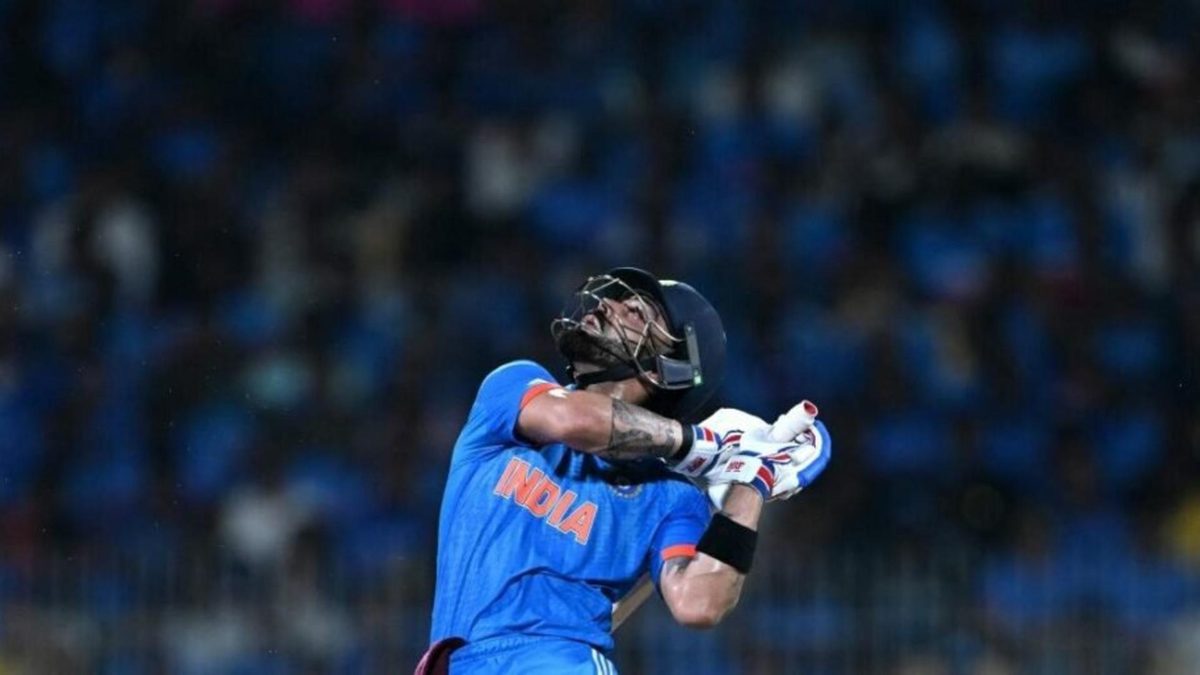
To bet on the World Cup with our Match Centre Partners bet365 head here.
“In the air! Could it be a fourth? It is a fourth! Australia are running riot, Hazlewood has 3-13 and Kohli’s scratchy innings comes an end.”
Or so the commentary could have gone in a parallel universe not too far away, had Mitchell Marsh not spilled one of the easier chances you’ll see. A quick scan through your Twitter feed or a glance at the newspaper headlines suggested that this was another Virat Kohli masterclass, yet another run chase that was bent to his will. And it was on paper at least. 2-3 became 167-4, which became an emphatic six-wicket win with nearly 10 overs to spare. An early scare was overcome and the pre-tournament favourites were up and running.
There were moments that passed the eye test too, those that reminded you of prime Kohli. An authoritative on-drive off Hazlewood, a sumptuous square drive off Mitchell Starc when the result was becoming a formality and the trademark scampering between the wickets in the middle overs, eking out every possible additional run.
But had the cards fallen another way, it would have been a very different story. And story is the key word here. So often in sport, we retrospectively attribute a narrative to a result that ignores the journey to that final outcome. It wasn’t just the Marsh drop either. Kohli loosely wafted at his fourth delivery against Starc, a wide ball whistling past his outside edge, just a hair’s width away from kissing his bat on its way through to Alex Carey.
There were two similar plays and misses in the overs that followed off the bowling of Hazlewood, mis-executions that weren’t fatal. All of that came before the most memorable error, the top edge off Hazlewood that was spilt by Marsh. On another day the post-game narrative could easily have centred on Kohli’s oddly human World Cup record, that’s seen him yield two centuries across four tournaments and for all his success chasing in bilateral series, had still yet to see him pass fifty in a successful run chase.
The longer you play this game, the more likely you are to get lost in a labyrinth of counterfactuals. Uncontrollable marginals sometimes go for you, sometimes they go against you but for all the advances in data analysis and how it has more of a say not only in how the game is played but in the broadcast coverage, the statistical layman’s vocabulary for innings like this is still frustratingly limited.
It wasn’t a bad innings by any means – Kohli hardly offered Australia a sniff after the missed chance on 12 – but compare it Rahul’s unbeaten 97, a genuine masterclass, which not only was chanceless but featured an early takedown of Zampa that stifled Australia’s most threatening middle overs weapon.
The change in post-game narrative speaks to how fine the margins are. A dropped catch can completely change the narrative of a performance or on how an individual is faring. Maybe we’re overenthusiastic in retrospectively imposing narratives because players have less agency than we’d like them to have. They’re not always deserving of the final number next to their name, and we don’t like the extent that luck plays. Your runs in the book are what’s remembered at the end of the day but too often we neglect what happens to get us to that final analysis.








